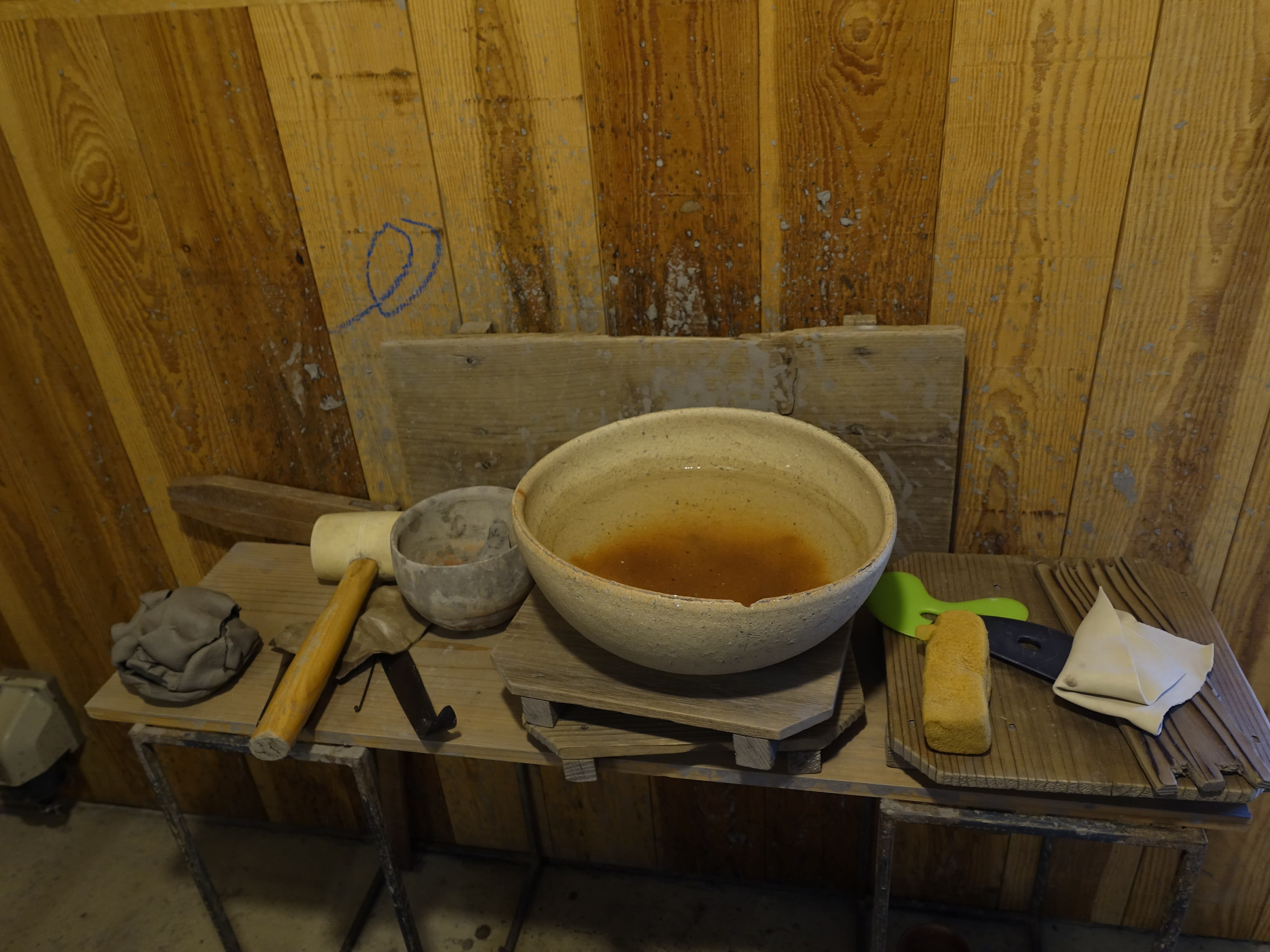
A ceramicist working in the tradition of Bizen, and the son of the Living National Treasure of Bizen—one of Japan's six great historical kilns—Koichiro Isezaki spoke to Ippodo Gallery about how he contemplates his work and technique in four responses.
Koichiro Isezaki, Bizen Tea Bowl - 備前 茶盌, (C25965)
Click here or on the image to see a feature about this tea bowl written by famous curator Glenn Adamson!
Question 1:
Do you practice tea in daily life? Please share your chanoyu routine, or a beloved memory of chanoyu.
Isezaki:
I had been practicing for Sado for nearly two years. I appreciated the stories and seasonal pastries the master prepared for each session, although I occasionally missed classes because of my busy schedule. Regarding tea ceremonies, I have attended them several times hosted by Seizo Hayashiya at Kakiden Gallery in Shinjuku called Chanoyu Doukoukai (Chanoyu Club). The theme of the Chaji was “Regardless of the school you join, remember to stay present and collaborate.” I remember Seizo kindly selected my tea bowls for the gathering several times.
As an artist, I got many insights about flow and space through Seizo’s tea sessions. This experience has motivated me to contribute to the joy of matcha delightfully.

Tools from Koichiro Isezaki's studio in Okayama prefecture.

Isezaki family kiln in Okayama prefecture.
Q2:
Please describe the influences that inspire your work.
Isezaki:
I had been practicing for Sado for nearly two years. I appreciated the stories and seasonal pastries the master prepared for each session, although I occasionally missed classes because of my busy schedule. Regarding tea ceremonies, I have attended them several times hosted by Seizo Hayashiya at Kakiden Gallery in Shinjuku called Chanoyu Doukoukai (Chanoyu Club). The theme of the Chaji was “Regardless of the school you join, remember to stay present and collaborate.” I remember Seizo kindly selected my tea bowls for the gathering several times.
As an artist, I got many insights about flow and space through Seizo’s tea sessions. This experience has motivated me to contribute to the joy of matcha delightfully.

Koichiro Isezaki, Bizen Tea Bowl - 備前 茶盌, (C25967)

Koichiro Isezaki, Tea bowl - 茶盌, (C24280)
Q3:
Please describe the qualities do you most treasure in a tea bowl—be that shape, color, texture, or history, style, and type of clay?
Isezaki:
I strive to give my art pieces a lively and varied appearance that embodies the traditional Bizen ware and goes beyond its original methods and approach.
The pieces should possess a distinct presence as an individual. While I acknowledge the importance of the combination with other utensils in bowl design, I prioritize crafting a complete form and appearance before considering their function as a tool.

Q4:
Please share with us how you prepare to make a new piece; how do you decide on the materials and direction for the idea?
Isezaki:
First and foremost, I connect with my mentality and emotions. Then touch the soil and anyhow feel it. Unless given up handling materials, something/someone led me to create a piece at some point.


